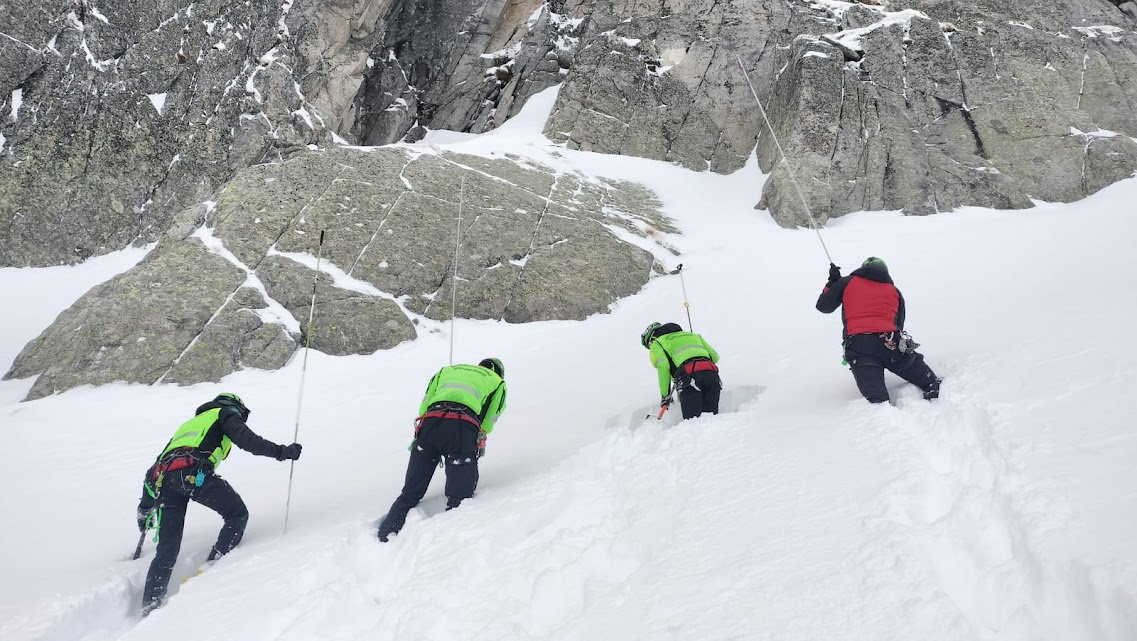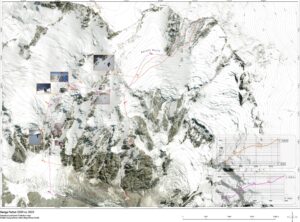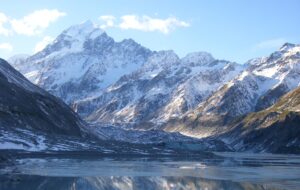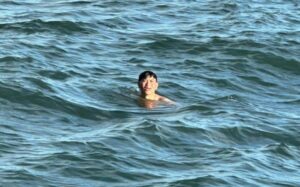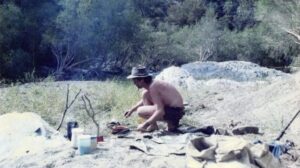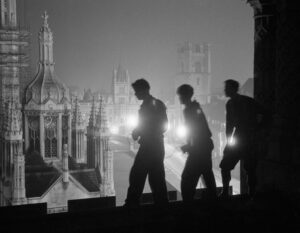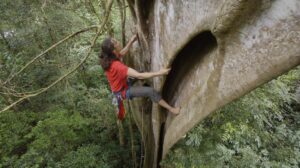New Year’s Eve on a snowy peak under a starry sky: It sounds like the perfect way to ring in the New Year. But tragedy doesn’t take a vacation over the holidays. As some toasted the evening with friends in a warm venue, two separate outings in Spain and Italy ended in disaster.
The bivouac influencer
Gerard Olive built himself a high profile on Instagram by specializing in “extreme bivouacs.” His handle, Xutonthetop, had 52,000 followers. Photos and videos showed him tucked in a sleeping bag on mountaintops, grassy plains, and snowy terraces, accompanied by typical influencer verbiage about freedom, overcoming limits, etc.
One bivy, in particular, went viral. In 2022, he strung a hammock between two granite outcrops on the Salenques-Tempestades ridge in the Pyrenees.
The two-kilometer-long ridge has several exposed passages and is the most technical route to reach 3,404m Aneto, the highest peak in the Pyrenees. When dry, it involves sections up to 5+ (UIAA grade) on excellent granite.
In winter, the scenery changes radically. Hard snow and ice plaster the rock, and the climb becomes a serious challenge requiring advanced mixed climbing skills. In Olive’s mind, it would mark a perfect finale to his 2024 bivvies. He would repeat the 2022 hammock stunt in winter.
The last climb
On December 30, the influencer left his car in a parking area in the Pyrenean village of Benasque and walked to an untended alpine hut. Here, he met a Mexican climber, the last person to see him alive. On the following morning, he left by himself toward the Llosas Valley, on the south side of the Aneto massif.
His family became worried when he failed to return home on January 2. The GREIM, the Spanish Mountain Rescue service, started searching on January 3, but the helicopter couldn’t survey the area properly due to cloudy weather.
No one knows for sure the route he might have taken. Local climber Jonatan Garcia, one of the most prolific climbers in the area — someone who has soloed the Salenques-Tempestades 50 times — tried to duplicate a possible route Olive might have taken.
There was no trace of him on the south face of Aneto. He surely fell down the ridge at some point, north of Aneto. Garcia shared his opinion about Olive’s route with the helicopter pilots. The following morning, they searched that area and found Olive’s lifeless body.

The rocky Salenques-Tempestades ridge on the left. Olive’s body was found at the base of the walls, although he probably fell from some higher point to the left, out of the frame. Photo: Jonatan Garcia
Deadly traverse
“I don’t think Gerard [Olive] planned to climb the entire ridge on his own, as he was not that experienced,” said Garcia. “Rather, he tried to access the ridge at his planned bivy point by traversing from the summit of nearby Margalida Peak.”
The problem, Garcia said, is that this traverse is exposed and difficult even in summer. The terrain alternates between smooth rock slabs and a very steep, slippery grassy ramp.
“In winter, it is worse,” Garcia went on. “With fresh snow, it’s avalanche-prone and requires progressing on very hard snow or ice, with…no mistakes allowed.”
Social media pressure
Garcia thinks Olive’s heavy backpack, with his bivouac gear and cameras, might have been a burden. Rescuers found his stuff scattered along the slope. The hammock was still perfectly folded; he probably had no chance to use it.
“Social media is a double-edged sword,” Garcia told ExplorersWeb. “It gives updated information about routes and areas, which has a positive impact on safety. But it also has a darker side. Some people feel too much pressure to increase their followers, even if that means taking excessive risks.
“Also, the positive feedback boosts self-confidence, in some cases beyond what is sensible,” he added.
Another tragedy, this time in Italy
No one noticed something had gone wrong for Aziz Ziriat, 36, and Sam Harris, 35, until they failed to catch their flight back home to London on January 6. The two friends were hiking the Adamello Massif in the Italian Alps.
“The family knew the climbers intended to use the Malga Dosson bivouac (2,360m) on New Year’s Eve and then hike in the area for a couple of days before descending to the valley and going straight to the airport,” Monica Malfatti, press manager of Trentino Alpine Rescue Services, told ExplorersWeb. “It seems like they wanted to reach the Rifugio Care Alto, but they got lost due to foggy weather.”

The Casina Malga Dosson, in summer. Photo: Davide Gamberini
Once the alarm was raised, Scorso Alpine Services launched a search, but conditions were difficult. There was a notable avalanche risk, and helicopters and drones couldn’t see much in the fog. Volunteers used quads to search the trails leading to refuges where the missing hikers might have found shelter.
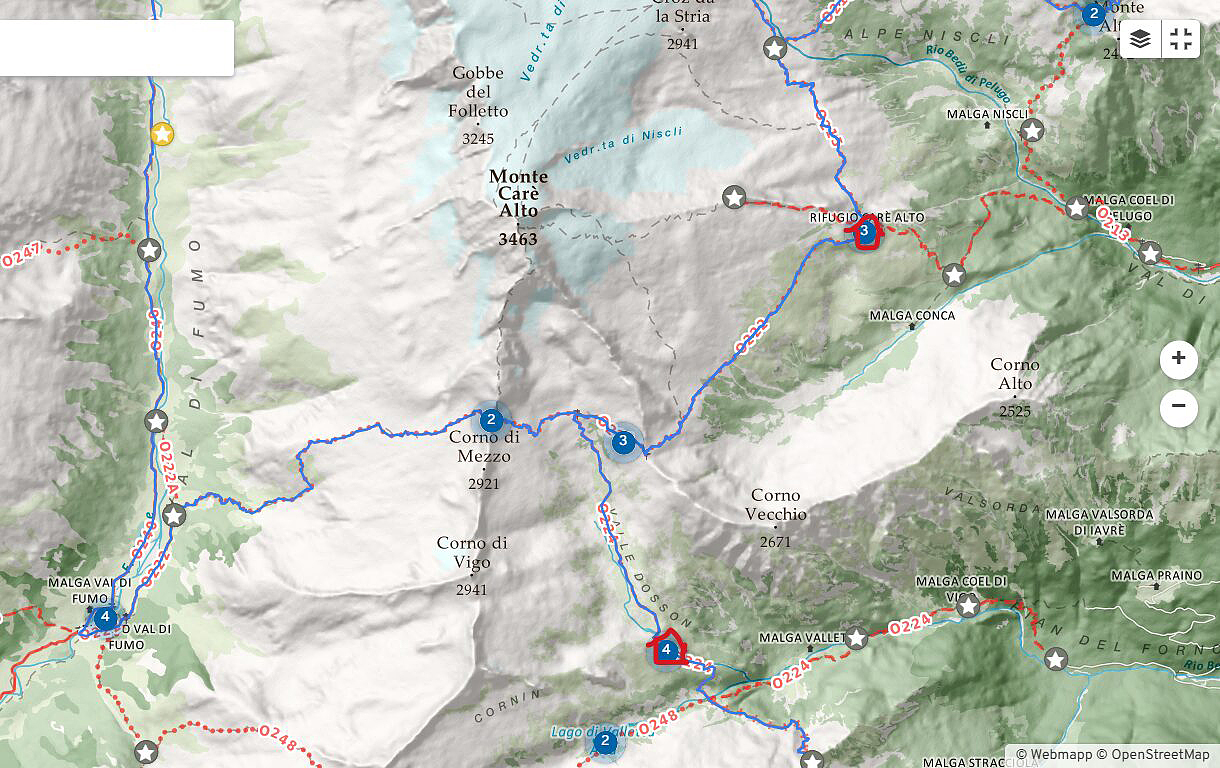
The area where the British hikers went missing, with Casina Malga Dosson to the south of Care Alto Peak (4) and Refuge Care Alto (3) to the east. Map: Rigugio Care Alto website
Backpack found
On Wednesday, with slightly better conditions, the helicopter took a team of rescuers to the Malga Dosson hut while the pilots searched further above. They found the backpacks of the missing climbers at the hut. The rescuers also located the last ping from one of the climber’s cell phones near Conca Pass, at about 2,600m.
The helicopters airlifted 15 rescuers to the area, and they started searching on foot with snow probes. Shortly after noon, they found the body of one of the climbers, soon identified as Sam Harris.
“[It] was found under the snow, at the foot of a rock face, at the base of the south face of Carè Alto,” stated a press release by the Scorso Alpino Trentino. “The dynamics of the accident are still being examined by the police, but it is possible that the mountaineer fell from above.”
Efforts then focused on finding the second climber, but deteriorating weather soon suspended the search. Because of the high risk of avalanches, helicopters flew everyone back to the valley. The search will hopefully resume tomorrow, Friday, weather permitting.
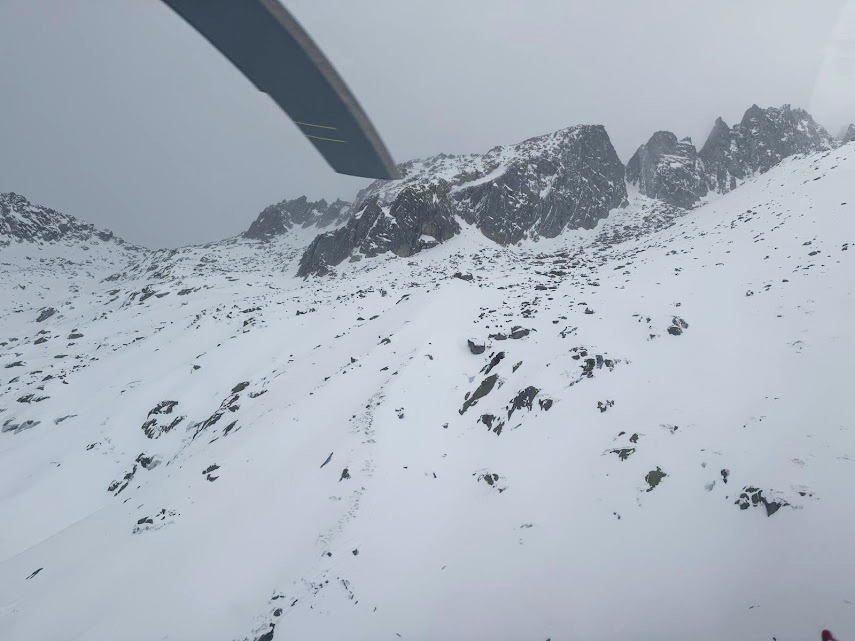
A helicopter searches the area in foggy weather yesterday. Photo: Soccorso Alpino e Speleologico Trentino
Not about experience
Asked by Explorersweb, members of the Italian Mountain Rescue Service admitted that winter holiday rescues have become more frequent because people have more free time to spend in the mountains.
“People want to discover something different during the holidays, but the accidents during this time may involve both inexperienced and very experienced climbers and hikers,” said Simone Alessandrini of the press office at the Italian Mountain Rescue Service.
It’s the conditions that are different: Frozen terrain, cold, unstable weather, and shorter days make winter forays more liable to go wrong than their summer equivalents.
Alessandrini mentioned a spectacular rescue that took place on the Lastoni di Formin in the Belluno Dolomites on New Year’s Eve. This one had a positive outcome. Three young climbers took the wrong rappel line while climbing the Re Artù route.
Stranded for hours
“They began their rappel but ended up stranded — two of them about 60 meters below the summit and the third about 20 meters lower,” Alessandrini said.
The rescue took from 5 pm until after midnight.
“After several unsuccessful attempts to approach the overhanging area where the climbers were stuck, the helicopter dropped off a Belluno rescuer and its own technical rescuer on the summit, at an altitude of 2,630m. It then flew back to the valley to pick up a team of four additional rescuers.”
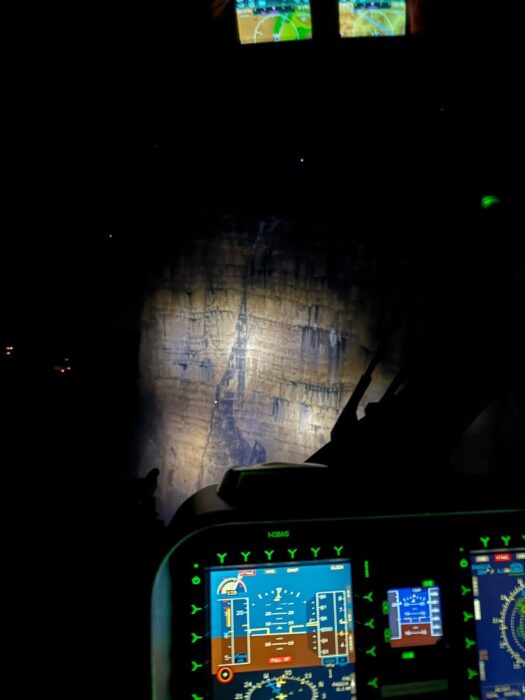
The wall where the climbers were stuck, seen from the rescue helicopter. Photo: Italian Mountain Rescue Service
The team worked in subzero temperatures, setting up a rappel system to reach the stranded climbers and lifting them back up to the summit. They then all descended the normal route of the peak until they reached a flat area where the helicopter could land.
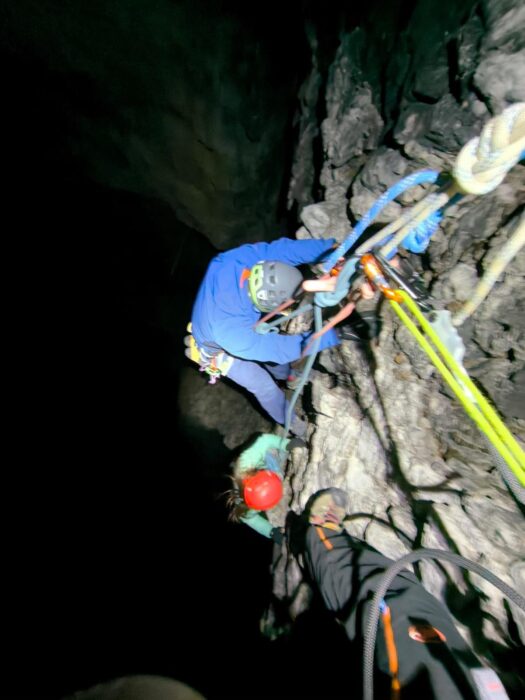
Rescuers reach stranded climbers on an overhanging Dolomites wall. Photo: Italian Mountain Rescue Service
